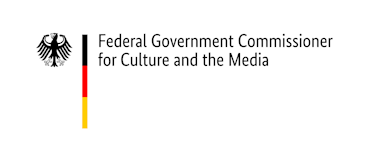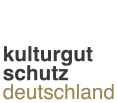Key Points
The German Act on the Protection of Cultural Property (Kulturgutschutzgesetz, KGSG) responds to several key concerns relating to the protection of cultural property. This section contains information on the most pressing of these concerns.
 Source: iStock
Source: iStock
Protection of cultural property at international level
Prevention of unlawful dealing
Illicit excavations and the laundering of the spoils of these excavations through illicit cross-border dealing in cultural objects is a worsening problem. Many archaeological sites that document early advanced civilizations are recklessly looted and destroyed, meaning that their treasures are irretrievably lost for humanity and future academic research. Yet such illicit excavations do not simply constitute an attack on the cultural heritage of humanity; particularly in regions affected by conflict, there appears to be a growing trend for looting and smuggling to be used as sources of funding for military and terrorist activities.
Against this backdrop, the United Nations Security Council has reiterated its calls for a stepping up of efforts to prevent unlawful dealing in cultural property (Resolution 2199 (2015), Sections 15 to 17; Resolution 2253 (2015), Annex I; Resolution 2347 (2017)).
The problems of illicit excavations, looting and unlawful dealing are not confined to regions hit by crises; they are encountered everywhere in the world, including in Europe. A particularly prominent example of this phenomenon is the 3,600-year-old Nebra Sky Disc, which was unlawfully excavated by “treasure hunters” in Saxony-Anhalt, then taken abroad and returned to Germany only via a circuitous route and with a great deal of effort on the part of the investigative authorities.
With the aim of cutting off the flow of trade in illicitly sourced cultural objects, the Act on the Protection of Cultural Property contains provisions prohibiting the import of cultural objects into Germany if they have been unlawfully exported out of their country of origin. The Act also imposes due diligence requirements in relation to the transfer of cultural objects (in particular their sale), with a view to ensuring that objects of a questionable origin can be identified and removed from the market.
Further information on import regulations.
Further information on due diligence requirements.
Further information on the legal situation in the relevant country of origin on cultural property law aborad.
Improvement of return mechanisms
If a cultural object has nevertheless been unlawfully introduced into Germany, the Act on the Protection of Cultural Property contains provisions regulating the process of returning the object in question to the country of origin; these are significantly simpler than the previous regulations. Further information on this topic can be found in the section on Return mechanisms.
Protection of cultural property at national level
Modernization of the regulations on cultural property of national significance
Mechanisms for preventing the exodus abroad of cultural property of particularly outstanding importance for our nation’s cultural understanding and identity have existed for many years in Germany; from 1919 in the form of provisions imposing export restrictions, and from 1955 onwards (in modified form) in the form of the German Act to Prevent the Exodus of German Cultural Property (Gesetz zum Schutz deutschen Kulturgutes gegen Abwanderung, KultgSchG).
For many decades, the system for preventing the exodus of cultural property has been founded on a register-based system; each Land maintains a register of cultural property of national significance into which cultural objects can be entered if an expert committee votes in favour of doing so on the grounds that the loss of this object would represent “a significant loss for German cultural heritage” (to quote the concise provisions of the 1955 Act).
The Act on the Protection of Cultural Property adheres to the basic principles of a system that has proven its worth, but also contains provisions that clarify certain points and modernize the procedure, and adds certain provisions to create greater legal certainty in the interests of owners.
Further information on this topic can be found in the section on Cultural property of national significance.
Improved protection for museum collections
As a result of the register-based system described above, a large proportion of Germany’s cultural heritage – particularly the public collections held by museums – was formerly denied special legal protection. At the same time, however, protected status of this kind is required for Germany to benefit from the return mechanisms established under EU and international law in the event of an unlawful export (e.g. following a theft from a museum). The Act on the Protection of Cultural Property therefore now also confers a general status of “national cultural property” upon the collections of publicly funded institutions responsible for preserving cultural property, without the need for an entry in a register of cultural property of national significance.
Read more about the term national cultural property.
Elimination of loopholes in preventing the exodus of cultural property
Since 1993, legislative provisions have existed at EU level stating that export licences are required for certain categories of cultural property that exceed certain age and value thresholds and that are to be exported from the EU into a non-EU third country (e.g. Switzerland, the USA, etc.); these include the provisions of the current Regulation (EC) No 116/2009, which are directly applicable in Germany. Further information on this topic can be found in the section on the Legal basis.
Following the same approach, since 2016, it has also been necessary to apply for a licence of this kind for exports to EU Member States, and 25 of the 27 EU Member States have already adopted regulations of this kind governing intra-EU exports. The age and value thresholds imposed by the Act on the Protection of Cultural Property are significantly higher (or in other words more generous) than those imposed by the EU Regulation, however. For example, a licence is required only when exporting a painting to France if the work is older than 75 years (compared to 50 years for third countries) and worth more than EUR 300,000 (compared to EUR 150,000 for third countries). These new provisions of the Act on the Protection of Cultural Property do not have any relevance for contemporary art.
Further details in this respect and a table comparing the provisions can be found in the section on Export regulations.

